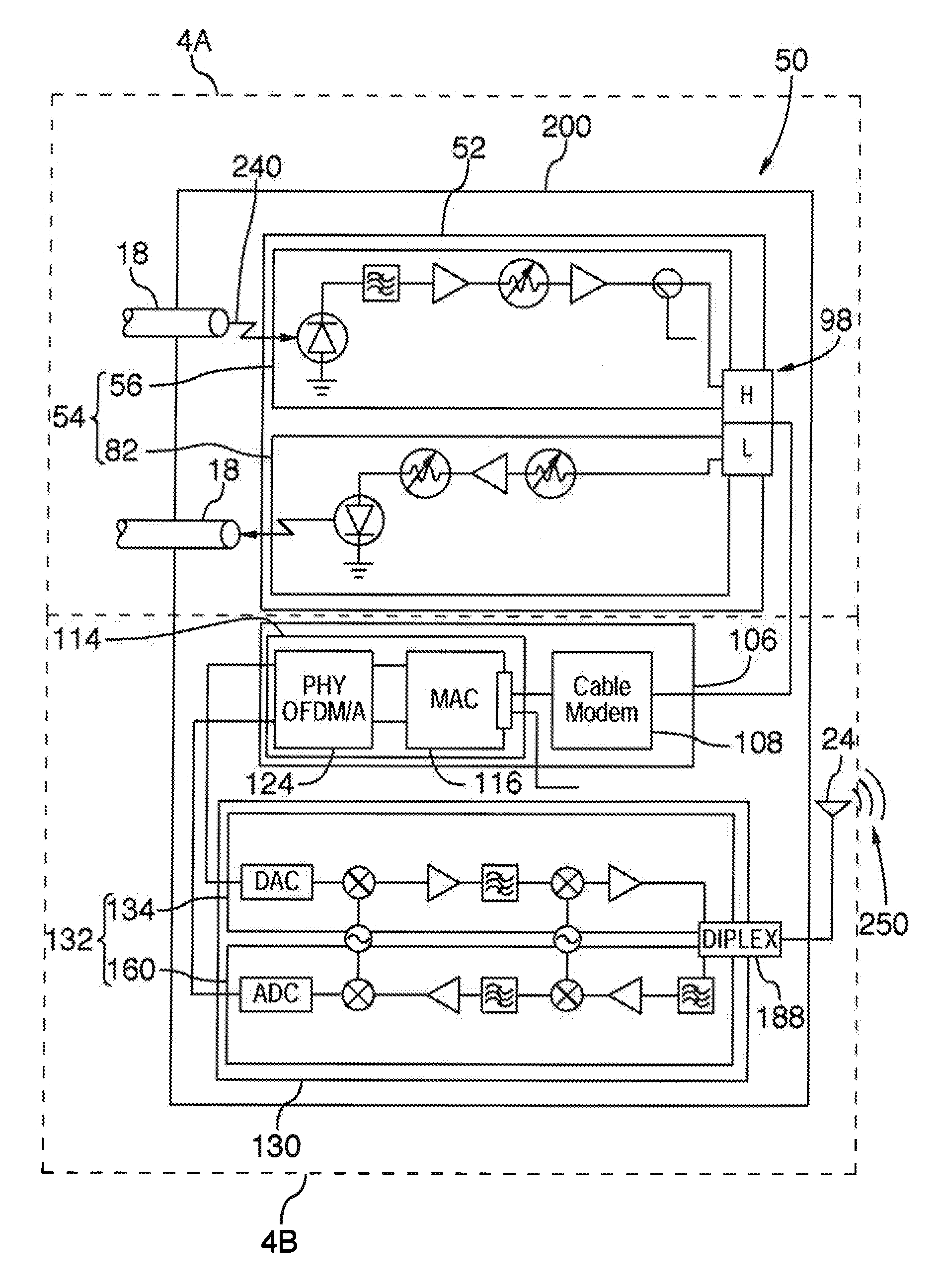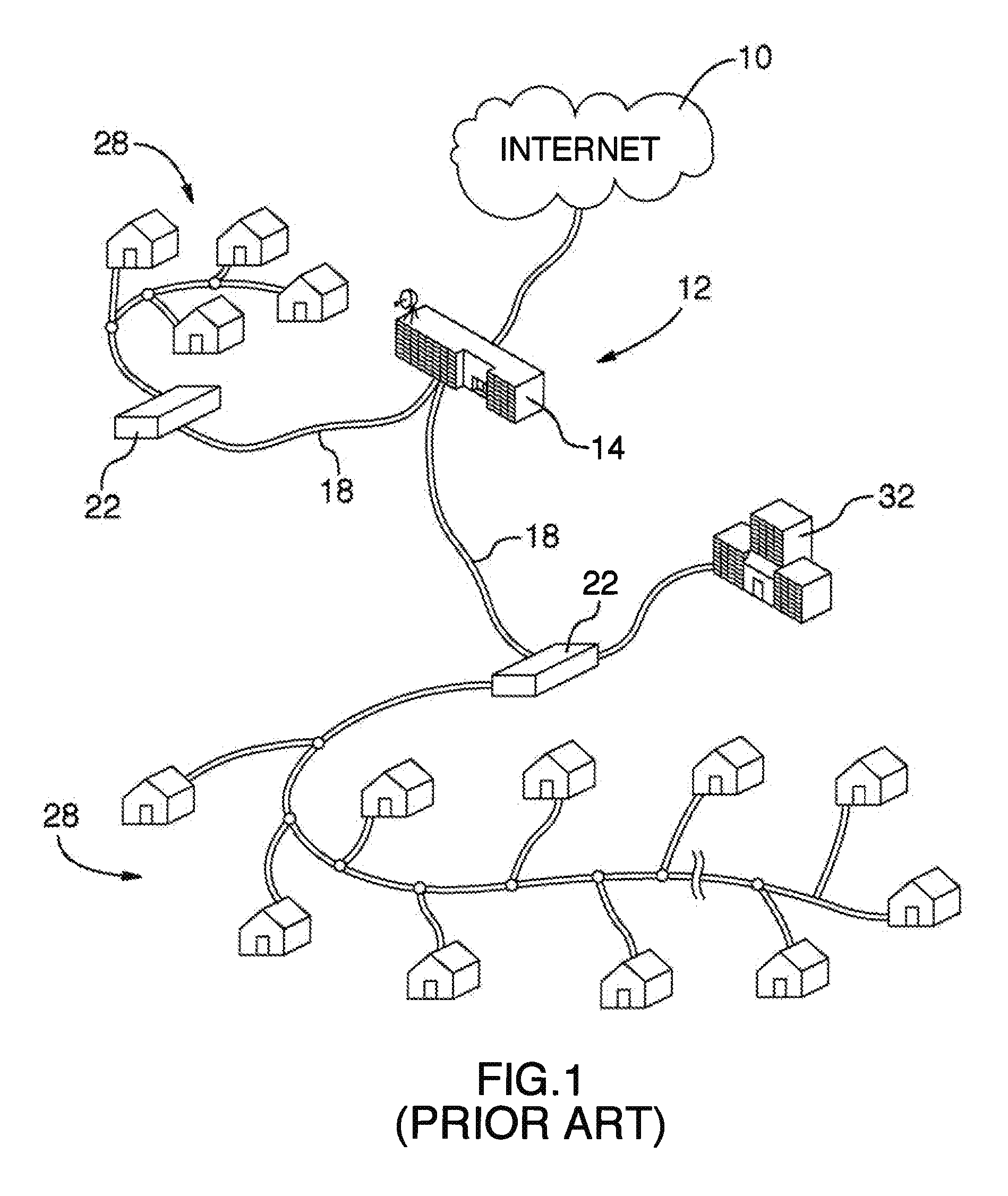Apparatus and method for transferring signals between a fiber network and a wireless network antenna
a technology of fiber network and wireless network, applied in electrical apparatus, radio transmission, electromagnetic transmission, etc., can solve the problems of reducing the throughput of such distant nodes, and increasing the cost of coaxial cable and fiber optic cable implementation
- Summary
- Abstract
- Description
- Claims
- Application Information
AI Technical Summary
Benefits of technology
Problems solved by technology
Method used
Image
Examples
Embodiment Construction
[0067]FIG. 1 depicts a prior art fiber network 12 connected to the Internet 10. The prior art network 12 may be a hybrid fiber coaxial (HFC) networks The fiber network 12 shown in FIG. 1 includes a head end cable operator 14 connected by coaxial or fiber optics cables 18 to a plurality of neighborhood distribution nodes 22. Each of the distribution nodes 22 is physically connected via a trunk and branch system of coaxial or fiber optics cables 18 to a large number of home and business subscribers 28, 32 in order to provide such subscribers with network services. That is, the fiber network 2 may generally include a “head end” where signals are received from satellite and other local sources, including the Internet and other services. At the head end, these signals are generally processed, modulated and combined to be transmitted via optical fibers at optical frequencies. The optical signals may be received at nodes and then converted back to RF signals. The fiber topology is generall...
PUM
 Login to View More
Login to View More Abstract
Description
Claims
Application Information
 Login to View More
Login to View More - R&D
- Intellectual Property
- Life Sciences
- Materials
- Tech Scout
- Unparalleled Data Quality
- Higher Quality Content
- 60% Fewer Hallucinations
Browse by: Latest US Patents, China's latest patents, Technical Efficacy Thesaurus, Application Domain, Technology Topic, Popular Technical Reports.
© 2025 PatSnap. All rights reserved.Legal|Privacy policy|Modern Slavery Act Transparency Statement|Sitemap|About US| Contact US: help@patsnap.com



